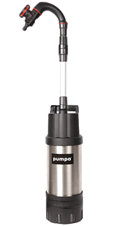Rain water
How to choose a rainwater tank and what pump to equip it with?
Do you own or build a family home and are you wondering what to do with rainwater? With the current problems with drought, it is certainly appropriate to look for a better way of using it than seducing it into the sewers. It is offered, for example, to use rainwater as a significantly cheaper alternative to regular water for garden irrigation. If this idea appeals to you, you will need a retention tank in which you can easily collect water and then use it. But how to choose such a tank? What kind of pump should I install it with and are there any state subsidies for its purchase?
Rainwater retention
The price of water is increasing year by year, but its consumption is huge. Each of us uses approximately 100 liters of water per day, and up to 850 liters per day are used to irrigate a 200 m2 lawn! Each of us uses approximately 24 liters a day just by flushing! Those are big numbers, so if you can reduce your tap water consumption by using a rainwater system, it makes sense both ecologically and financially.
The already mentioned retention tanks, mostly made of plastic, which are widely available on the market, are used to retain rainwater. However, unused cesspools or IBC containers can also be used. In addition, the container does not have to be placed underground, although this is of course the most suitable solution.
Did you know that?
- An individual consumes an average of 90 liters of water per day?
- Do we use more than a third of the water consumed for showering and personal hygiene?
- Does an individual flush up to 22 liters of water a day in the toilet?
- For optimal irrigation of the garden, you need 25-40 liters of water per square meter per week.
- With a lawn size of 300 m2, you will need approx. 9 cubic meters of water per week for irrigation.
